Chemically, Epsom salt is known as magnesium sulfate, and it is highly valued in horticulture for its potential to enhance the vigor of plants. This article closely examines how Epsom salt works with plants to provide additional nutrients necessary for plant growth. We shall go through some plants that benefit greatly from using this substance, explaining their growth cycles concerning sulfate and magnesium effects. The total review will assist beginners and professionals in gardening on the best use of Epsom salts by giving directions on how to apply them and the quantities needed for effective results. Additionally, we distinguish between scientific evidence and stories, thus offering an unambiguous research-based view about Epsom salts’ uses in horticulture.
What are the benefits of using epsom salt for plants?
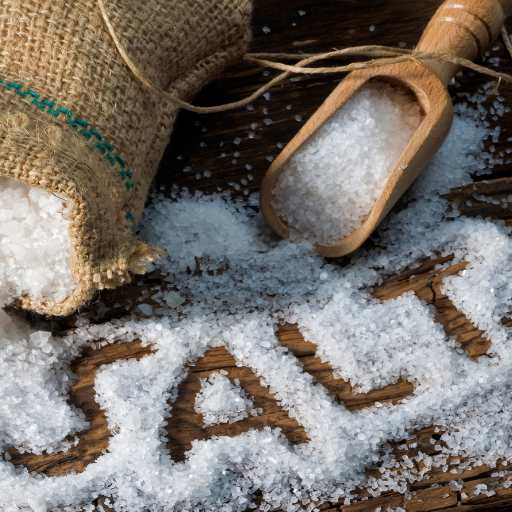
One of the main components of Epsom salt is magnesium sulfate. This offers two vital supplements for plants, which are magnesium and sulfur. Magnesium is part of chlorophyll, the pigment that makes photosynthesis possible in plants so as they can turn sunlight into energy. It also facilitates the assimilation of other important nutrients like phosphorous and nitrogen. Conversely, sulfur helps synthesize some amino acids (cysteine), vitamins and enzymes that occur in our bodies.
When these substances combine to work together on a plant basis, they improve general plant health leading to better flowering, more fruit production and improved green foliage among others. Also, Epsom salt can cure magnesium deficiency in plants such as yellowing leaves and stunted growth.
How does epsom salt support plant health?
Epsom salt supports plant health by several means, including magnesium, which is a crucial component of Epsom salt that has a role in chlorophyll formation within the cells of plants. A lack of magnesium may impair a plant’s ability to convert light into energy through photosynthesis because it forms part of chlorophyll. Besides this, enzymes require certain metals like magnesium for them to perform their functions within organisms well like metabolism processes in higher organisms. Moreover, sulfur assists in synthesizing amino acids such as cysteine or methionine, while specialized minerals are useful for protein synthesis.
Technical Parameters:
- Magnesium Content: Epsom salt is approximately 10% of magnesium necessary for producing chlorophyll.
- Sulfur Content: Epsom salt contains approximately 13% Sulfur, which is needed for amino acid synthesis and enzyme creation.
- Photosynthesis Efficiency: Magnesium boosts photosynthesis efficiency, resulting in more energy output by plants, hence boosting their vitality levels.
- Enzymatic Functions: Consequently, it performs as enzymes cofactor thus enhancing nutrient assimilation and other metabolic processes.
What nutrients are provided by epsom salt?
Epsom salt offers two vital plant nutrients; magnesium and sulfur. Magnesium accounts for about 10 percent of Epsom salt and is essential in chlorophyll production, facilitating photosynthesis and supporting energy synthesis. It co-acts with some enzymes required in nutrient absorption, enabling overall metabolic activities in plants. On the contrary, sulfur makes up roughly 13% of Epsom salt by weight (Wikipedia) and synthesizes key amino acids like cysteine and methionine that are necessary for protein formation. Sulfur also assists in making certain vitamins that are useful for plants’ wellbeing.
Why do gardeners add epsom salt in the garden?
A gardener adds Epsom salt to their garden because they suffer from low amounts of magnesium and sulfur that might hinder their growth and development. Magnesium which forms nearly 10% of Epsom salts produces chlorophyll that results into good photosynthesis efficiency within the plant leading to high energy production within the cells. Equally, it acts as a cofactor for numerous enzyme systems, ensuring that metabolism occurs efficiently within plants, among other functions such as nutrient absorption. Sulfur content constitutes around 13% of Epsom Salt (Wikipedia), providing an important building block for proteins, including cysteine and methionine, necessary amino acids. In addition, sulfur helps create some vitamins which aid in promoting the general health status of a plant. By providing these important nourishments, Epsom salt can be used to make stronger garden plants whose output has increased considerably over time.
How to properly use epsom salt for garden plants?
To use Epsom salt correctly for garden plants, start by doing a soil examination to determine the present magnesium and sulfur levels. For common use, dissolve one tablespoon of Epsom salt in a gallon of water and water plants with it once every month. For specific usage, spread one tablespoon of dry Epsom salt at the base of plants such as tomatoes, peppers and roses after every fortnight. After applying the dry salt, thoroughly water it so that it may dissolve into and integrate with the soil. Furthermore, for foliar feeding purposes dissolve one tablespoon of Epsom salt in a gallon of water and spray directly on leaves during growing season. To prevent this problem from occurring follow dosages as recommended.
How much epsom salt should be used per gallon of water?
The required amount of Epsom salt depends on how it’s applied; whether through foliar feeding or direct application to soils.3 General nutrient supplementation requires dissolving 1 tbspn Epsom Salt in 1 Gallon Water and applying around roots via irrigation. Foliar feeding involves mixing 1 tbspn Epsom Salt in one Gallon Water followed by spraying onto plant leaves directly. The quantity ensures optimal magnesium and sulfur concentrations while avoiding over-application which can lead to nutrient imbalances and potential plant damage since increased monitoring plants for signs indicates where application rates should be adjusted.
What is the best method to apply epsom salt?
The best way to apply Epsom salts depends on plant requirements and desired results. Based on current agricultural practices and recommendations:
- Soil Drenching: Dissolve epsomsalt in water at 1tb/gal ratio then pour solution around roots
- Foliar Feeding: Mix one table spoonful of Epsom salt with a gallonful then Spray Directly Onto Leaves
- Dry Application: Sprinkle 1tbsp dry epsomsalt at the base of each plant followed by thorough watering
How often should you use epsom salt on your plants?
- Vegetables and Flowering Plants: For vegetables such as tomatoes, peppers and roses a bi-weekly application is recommended.
- Houseplants and Lawns: Houseplants generally need monthly application. If you have many houseplants, dissolve two tablespoons of Epsom salt in a gallon of water for each houseplant and water them with this solution. Lawns may be applied up to three times per year, especially during the growing season. This is by mixing three pounds of Epsom salt spray into Water Gallon and ensuring uniform distribution.
- Seedlings and Transplants: Epsom salt is advisable during the early planting stage when handling seedlings or newly transplanted plants. For optimum growth and stress resistance, as recommended, one tablespoon of Epsom salt should be mixed into the planting hole or a diluted solution (one tablespoon per gallon of water) every two weeks post-establishment.
Which plants benefit most from using epsom salt?
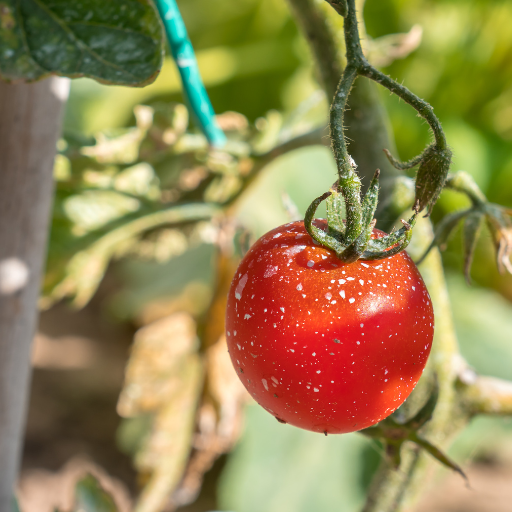
Various fruiting and blossoming species are among the plants that can significantly benefit from Epsom salt. Tomatoes and peppers require a lot of magnesium, essential for fruit development. Roses also do well with Epsom salt, promoting lovely flowers and strong foliage. Some types of ferns or palms have difficulty with nutrient uptake or turning green; however, they can show marked improvement when they start being fed with water containing Epsom salts. Lastly, lawns, in general, may get some boost by applying occasional Epsom salts that support lush growth.
Can epsom salt help tomato plants grow better?
Yes, Epsom salt can help tomato plants grow better because it is a rich source of magnesium and sulfur minerals, which are vital for their well-being. The main advantages include:
- Magnesium Supplementation: Magnesium is required in chlorophyll production and captures solar energy during photosynthesis. If plants have a magnesium deficiency, this form of Magnesium Sulfate (Epsom Salt) will correct it and make them healthier.
- Enhanced Nutrient Uptake: Nitrogen, phosphorus etc., are taken up by these nutrients (from available sources).This makes them very important in supporting other plant nutrients such as nitrogen phosphorous.This enhances the plant’s overall health, leading to an increase in its yield basis.
- Solution Concentration: The standard recommendation is to dissolve one tablespoonful of Epsom salt into one gallon of water.This solution can be applied either to leaves or to the soil directly twice every fortnight throughout the growing period.The quantity ensures enough magnesium intake into tomato plants but not excess.
- Improved Blossom-End Rot: Continuous use of Epsom salts does not cure blossom-end rot disease but helps keep magnesium levels up, which supports healthy cell structure and fruit development.
Is epsom salt beneficial for rose bushes?
Yes, Epsom salt is beneficial for rose bushes. The major component in it is Magnesium that helps in photosynthesis and chlorophyll production. This can result to healthier flowers, with stronger plants. Besides, the sulfur present in epsom salt acts as a soil conditioner thus enhancing plant nutrient uptake such as nitrogen and phosphorus making them available to the plants easily. Add one tablespoon per gallon of water and apply this solution once every month on your rose bushes during the growing season.
Do pepper plants thrive with epsom salt?
Yes, using Epsom salts can be very good for pepper plants since they contain magnesium, which makes strong cell walls while allowing essential nutrients like nitrogen and phosphorous to get into cells.These nutrients enable robust plant growth with lush foliage and abundant fruiting. To apply Epsom salts to peppers, dissolve one spoonful in a gallon of water and soak the plants every 4-6 weeks. This avoids magnesium lockout or toxicity, keeping the crop at optimum levels for better yields without any nutrient-related severe problems.
Is there any risk of using too much epsom salt?
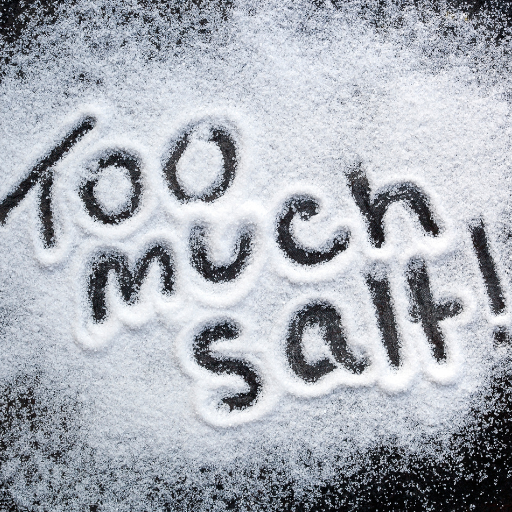
Indeed, there is a danger of overusing Epsom salt. Excessive use may cause magnesium poisoning, resulting in scorching of leaves, or calcium deficiency, which may cause an imbalance of soil nutrients; thus, the plant cannot pick up enough calcium from the soil. This condition can also worsen problems like Blossom-end Rot in vulnerable plants. It is important to adhere to recommended application rates and track levels of soil Mg to avoid such negative effects.
What are the signs of overusing epsom salt?
Different signs show one has used much Epsom salts, but some specific symptoms in plants can identify them. Firstly, leaf scorch is one of the main symptoms where leaves turn brown or yellow on edges due to more magnesium infiltration. This might be due to nutrient imbalance in soils that affects the ability of the plant’s roots to uptake calcium effectively. Consequently, conditions like blossom-end rot become prevalent especially with regard to tomatoes as well as peppers among others.Anot her features would include slow growth whereby stunted development and poor vigor characterize these crops often when necessary nutrients, including potassium and calcium, are blocked off by an abundance supply of magnesium, thereby locking out other essential nutrients like calcium and potassium required by plants for proper growth, leading to stunted growth pattern seen in most vegetable gardens.Consequently white crust on top soil will appear showing salt build up.It is very vital to adhere strictly to recommended application rates i.e., 1 tablespoon per gallon of water every four to six weeks along with periodic monitoring of soil tests for magnesium levels.
How can one mitigate the negative effects of excessive epsom salt?
A number of remediation measures can be performed to counter the detrimental effects arising from excessive use of Epsom salts.Firstly, it is critical that thorough soil analysis is undertaken to establish exact nutrient imbalances while keeping records on magnesium levels.On confirmation that there are high levels, plenty of running water should be used to wash away the excess salts from the soil. In general, six inches of water over the concerned area will suffice for this purpose.
Furthermore, adding organic matter such as compost or well-rotted manure can enhance soil structure and increase nutrient availability. It helps maintain a balanced nutrient profile and improves soil moisture retention. Normally, two inches to one inch should be mixed with 6 to 8 inches of topsoil.
In addition, it is important to supplement the soil with calcium amendments like gypsum (calcium sulfate), which act against magnesium toxicity by ensuring adequate calcium levels are available.Firstly, the recommended application rates are usually 25-50 pounds per 1000 square feet of any given piece of land; therefore, they need thorough mixing inside the soil.
Finally, regular monitoring and adjustment of fertilization schemes according to soil test results can help maintain an optimal balance between nutrients and prevent future issues concerning Epsom overuse.
How to create the perfect epsom salt solution for your garden?
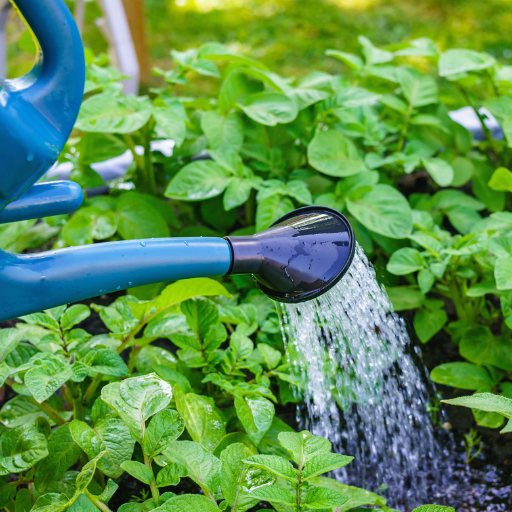
It is important to measure accurately and apply precisely while preparing the perfect Epsom salt solution for your garden to ensure plants grow in the best way possible. Start by mixing a tablespoonful of Epsom salts in a gallon of water until the salts are completely dissolved. If using foliar application, mist leaves with this solution using a spray bottle during cooler times of day when the sun is not so hot; thus preventing burning of the leaves. For soil drench method pour on the ground around the plant directly to apply it all over. To get good results, it is recommended that you make such applications every two to four weeks during growing period. The most wanted changes can be made depending on specific plant needs and soil test results.
How much epsom salt per gallon?
The ideal ratio of Epsom salt per gallon varies slightly based on different plants’ needs. Typically, two tablespoons of Epsom salt are advised for one gallon of water; sometimes, this may be reduced to 1 tablespoon if certain crops need it. Such a concentration provides adequate magnesium and sulfur necessary for foliar spray or soil drenching which promotes growth in plants. For example, tomatoes, peppers and roses typically receive 1 tablespoon per gallon mixture while ornamentals as well as lawns benefit better from higher 2 tablespoons per gallon concentrates. Dissolve it well before use and take care to ascertain even distribution within your field especially when applying it on whole gardens.
Can I mix epsom salt with other fertilizers?
Yes, there is no problem mixing Epsom salt with other fertilizers to improve plants’ health and growth. When combined with common fertilizers, Epsom salt supplies essential magnesium-sulfur along with other vital nutrients to ensure a balanced nutrient profile. For any of these mixtures, the user should adhere strictly to the blend ratios as per the fertilizer so that nutrient imbalance are avoided. This is why it is better to use Epsom salts as a supplement and not as your main source of plant food, ensuring proper mixing so that there is no clumping and inconsistent application in gardens. Monitor plant health and soil condition regularly to adjust when necessary in your fertilization program.
When do you apply epsom salt for plants?
The most appropriate time for applying Epsom salts onto your garden depends on individual crop requirements plus growing seasons. The beginning of springtime is generally preferred since this marks the onset of the active growing season allowing absorption of magnesium and sulfur by plants in order to promote growth. Flowering plants and vegetables may get great results if Epsom salt is applied during planting time, during growth stage, and at fruiting initiation. Specifically, roses need buds just about ready to bloom; tomatoes or peppers require blooms present before starting monthly applications while others like ornamentals/ lawns will require twice that dosage (2 tablespoons per gallon) per month for instance. By applying Epsom salts at such critical moments in their life cycles, plants can obtain the elements required for their vigorous development, resulting in increased yield. Therefore, always ensure enough moisture availability before applying water-soluble minerals into the ground.
How does epsom salt impact soil health?
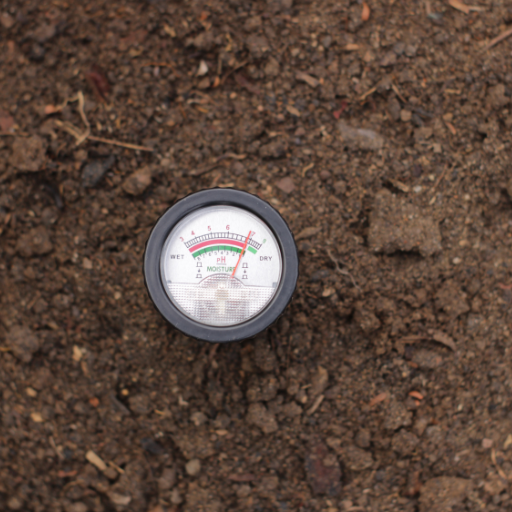
In the same way, soil health is affected by Epsom salt through its function of increasing the presence of key nutrients such as magnesium and sulfur that are important for plant growth. It has been shown that Mg is an essential part of chlorophyll molecules hence plays a pivotal role in photosynthesis. More photosynthesis leads to healthier and more vigorous plants. On the other hand, enzyme functioning and production of essential amino acids require sulfur. Moreover, compacted soil can be loosened using Epsom salts, improve water drainage and increase nutrient uptake by plants. Nonetheless, it should be noted that if not used properly, it could result in imbalanced nutrient content in the soil, thus affecting plant growth negatively. As a result, it is advisable first to carry out a soil test before applying any type of fertilizer.
How does epsom salt influence soil pH?
Epsom salts which have a neutral Ph because they contain magnesium sulfate (MgSO₄) do not significantly affect soil pH when used at normal rates. Unlike lime or sulphur, which can raise or lower pH respectively, among other things, Epsom salts keep your soil pH balanced. The fact that such applications provide only essential nutrients, including sulfur and magnesium, without causing drastic changes in acidity or alkalinity has been confirmed by studies and expert sources about this product . However, overuse may indirectly contribute to salinization of soils eventually affecting their ph levels and general healthiness of plants growing on them.hence, it is important that salt be applied by specific needs for these elements along with recommended application rates so as to avoid negative implications associated with excess use.
Can epsom salt improve soil structure?
Certainly, Epsom Salt can enhance soil structure resulting into improved moisture retention capabilities while also preventing compaction. In order to improve flocculation where clay based soils are involved the viability of those structures should also depend on magnesium component associated with Magnesium Sulphate. This will in turn ensure there is improved aeration and drainage which are very essential for root development and general plant growth. Similarly, sulfur as sulfate helps break down organic matter thus supporting soil structure enhancing microbiological activity. Applying Epsom salt at the rate of about 1 to 2 tablespoons per gallon of water, and watering plants with this solution every month is beneficial by technical studies. Therefore, one cannot ignore regular monitoring of soil conditions because misuse of fertilizers may cause salt build up and nutrient imbalance.
What is the effect of epsom salt on soil microorganisms?
Primarily composed of magnesium sulfate, Epsom Salt can positively and negatively influence soil microorganisms. Microbes require magnesium found in Epsom salts which can activate enzymes that facilitate metabolic processes necessary for their survival. This enhanced microbial activity leads to improved nutrient cycling thereby increasing the availability of vital elements especially nutrients needed by plants. Besides, sulfate as sulfur is also relevant for bacterial proliferation and synthesis or amino acids too. According to technical parameters, optimal concentration above which there will be adverse effects should not exceed 2-3 tablespoons per gallon of water when applied once a month.
Conversely, its too much usage is harmful. Infertile soil due to high content of MgSO⁴ may result in a stressful environment, which reduces the biodiversity of soil microbes by increasing osmotic pressure in the soil. As a result, this stress can slow down the growth of vulnerable microorganisms; hence, threatening the equilibrium state of soil fertility. In this regard, adhering to proper dosage levels is very important for healthy microbe population. Therefore, it is recommended that one should regularly test and monitor their soils so as to avoid any long term negative impacts on the same.
Reference sources
Frequently Asked Questions (FAQs)
Q: What is Epsom salt and how does it benefit plants?
A: Epsom salt is a mineral compound consisting of magnesium sulfate. It benefits plants by providing essential nutrients that help with growth, flowering, and overall health. The benefits of Epsom salt include enhancing nutrient absorption and correcting magnesium deficiencies in garden soil.
Q: Which plants benefit the most from using Epsom salt?
A: Many plants benefit from the addition of Epsom salt, particularly those with magnesium needs such as tomatoes, peppers, roses, and houseplants. Epsom salt can benefit these plants by promoting healthier foliage and more robust blooms.
Q: How do you apply Epsom salt to the soil in a vegetable garden?
A: To apply Epsom salt to the soil in your vegetable garden, you can mix one tablespoon of Epsom salt with a gallon of water and water your plants with this solution every two weeks. Alternatively, sprinkle Epsom salt around the base of the plants and lightly work it into the soil.
Q: Is it safe to use Epsom salt on all types of plants?
A: While Epsom salt can help many plants, it is essential to use it correctly to avoid harm to the plants. Epsom salts do not contain nitrogen, phosphorus, or potassium, so they should be used to complement, not replace, your regular fertilizer regimen.
Q: How much Epsom salt should be used per foot of plant?
A: When incorporating Epsom salt into your garden soil, a general recommendation is to use one tablespoon of Epsom salt per foot of plant height. This measurement helps ensure that plants receive enough magnesium without overuse.
Q: Can Epsom salt be used for indoor plants and how?
A: Yes, Epsom salt can be used for indoor plants. Mix half a teaspoon of Epsom salt with a gallon of water and use this solution to water your houseplants once a month. This practice helps provide indoor plants with magnesium and sulfate they may be lacking.
Q: Can Epsom salt be harmful to plants if overused?
A: Yes, overusing Epsom salt can be harmful to plants. Excessive magnesium can interfere with calcium uptake, leading to nutrient imbalances. Therefore, it’s crucial to follow recommended guidelines and not overapply Epsom salt around the base of your plants.
Q: How does Epsom salt enhance the growth of peppers and tomatoes?
A: Epsom salt enhances the growth of peppers and tomatoes by providing magnesium, which is vital for photosynthesis and fruit development. Adding Epsom salt to the soil helps these plants produce more vibrant foliage and larger, healthier fruits.






